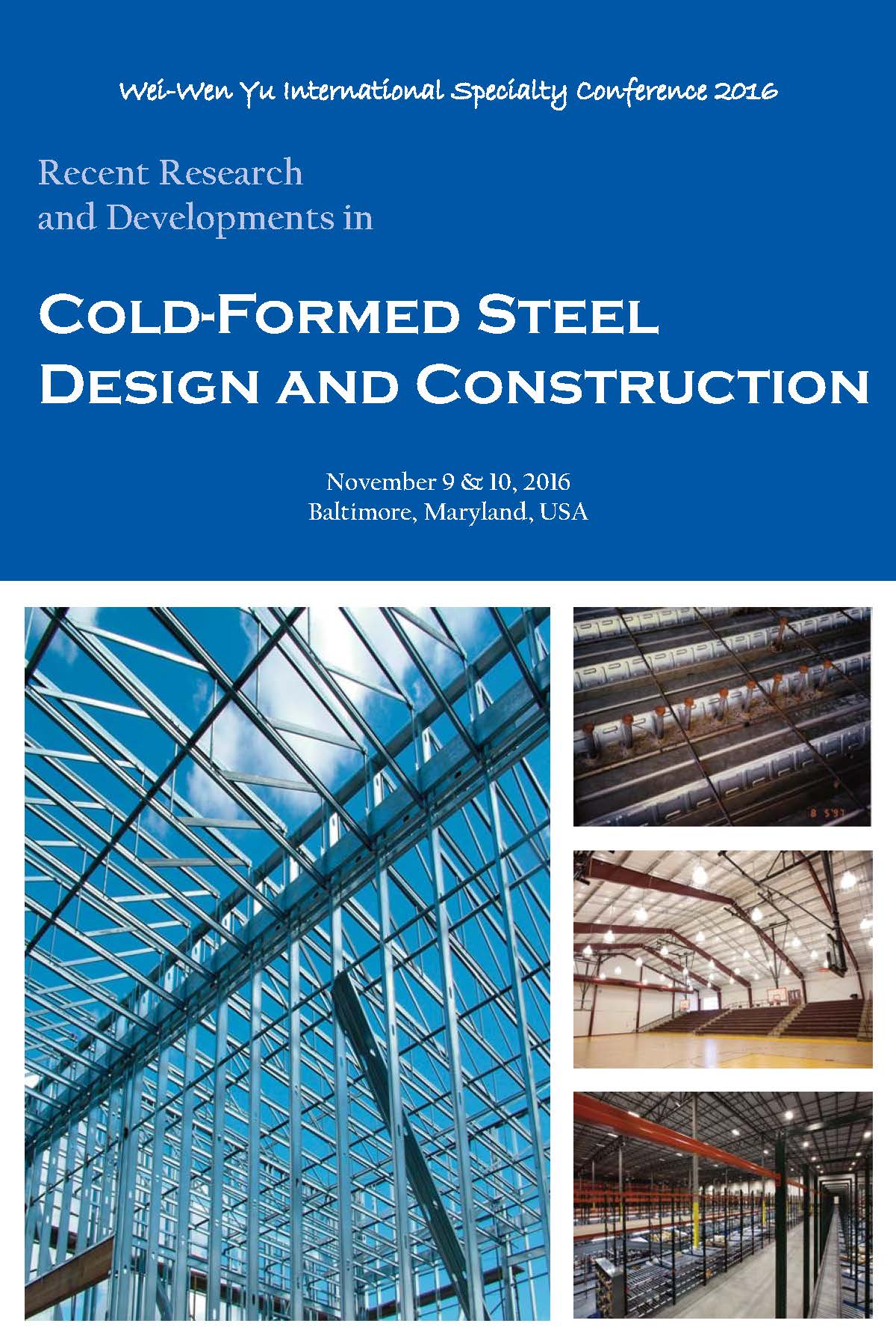Session Dates
10 Nov 2016
Abstract
Cold-formed steel haunched portal frames are popular structures in industrial and housing applications. They are mostly used as sheds, garages, and shelters, and are common in rural areas. Cold-formed steel portal frames with spans of up to 30m (100 ft) are now being constructed in Australia. As these large structures are fairly new to the market, there is limited data on their feasibility and design recommendations. An experimental program was carried out on a series of portal frame systems composed of back-to-back channels for the columns, rafters, and knee braces. The system consisted of three frames connected in parallel with purlins to simulate a free standing structure, with an approximate span of 14 m (46 ft), column height of 5.3 m (17 ft), and apex height of 7 m (23 ft). Several configurations were tested including variations in the knee connection, sleeve stiffeners in the columns and rafters, and loading of either vertical or combined horizontal and vertical loads. Deflections were recorded at various locations to measure global and local movements of the structural members, as well as column base reactions and base rotations. It was determined that the column bases are semi-rigid and further column base connection tests were completed to quantify column base connection stiffness for bending about the column major and minor axes, as well as twist. Results of the column base connection stiffness are presented as well as the implications for frame design.
Department(s)
Civil, Architectural and Environmental Engineering
Research Center/Lab(s)
Wei-Wen Yu Center for Cold-Formed Steel Structures
Meeting Name
International Specialty Conference on Cold-Formed Steel Structures 2016
Publisher
Missouri University of Science and Technology
Document Version
Final Version
Rights
© 2016 Missouri University of Science and Technology, All rights reserved.
Document Type
Article - Conference proceedings
File Type
text
Language
English
Recommended Citation
Blum, H. B. and Rasmussen, K. J. R., "Experiments on Column Base Stiffness of Long-Span Cold-Formed Steel Portal Frames Composed of Double Channels" (2016). CCFSS Proceedings of International Specialty Conference on Cold-Formed Steel Structures (1971 - 2018). 1.
https://scholarsmine.mst.edu/isccss/23iccfss/session7/1
Experiments on Column Base Stiffness of Long-Span Cold-Formed Steel Portal Frames Composed of Double Channels
Cold-formed steel haunched portal frames are popular structures in industrial and housing applications. They are mostly used as sheds, garages, and shelters, and are common in rural areas. Cold-formed steel portal frames with spans of up to 30m (100 ft) are now being constructed in Australia. As these large structures are fairly new to the market, there is limited data on their feasibility and design recommendations. An experimental program was carried out on a series of portal frame systems composed of back-to-back channels for the columns, rafters, and knee braces. The system consisted of three frames connected in parallel with purlins to simulate a free standing structure, with an approximate span of 14 m (46 ft), column height of 5.3 m (17 ft), and apex height of 7 m (23 ft). Several configurations were tested including variations in the knee connection, sleeve stiffeners in the columns and rafters, and loading of either vertical or combined horizontal and vertical loads. Deflections were recorded at various locations to measure global and local movements of the structural members, as well as column base reactions and base rotations. It was determined that the column bases are semi-rigid and further column base connection tests were completed to quantify column base connection stiffness for bending about the column major and minor axes, as well as twist. Results of the column base connection stiffness are presented as well as the implications for frame design.



